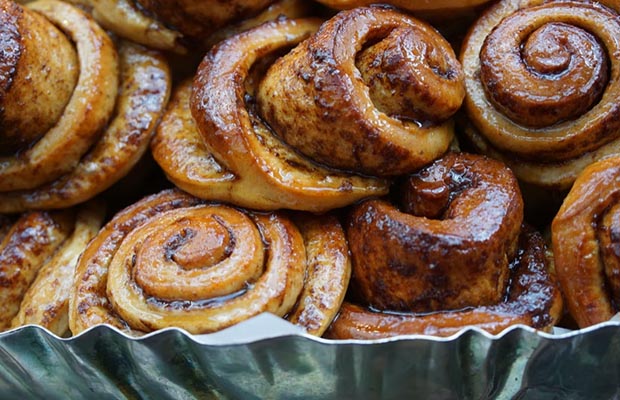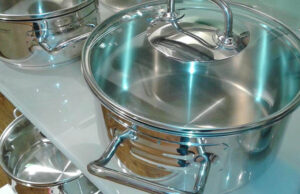We love to indulge in cinnamon rolls on the weekends. They’re an expedient breakfast option and simple to bake. There are numerous variations of cinnamon rolls available online, including traditional, oreo, and orange zest versions.
Have you purchased or prepared too many cinnamon rolls? Then, you probably have questions about how to store and how long are cinnamon rolls good for.
Or perhaps you’re thinking about purchasing more from your preferred bakery so you can enjoy them a few days from now. You are unsure of their shelf life, though. You might have even thought about freezing extra cinnamon rolls, but you’re not sure how that will work out.
Let’s get started if you’re interested.
Table of Contents
How Long Are Cinnamon Rolls Good For?
For one to two days on the counter and four to five days in the fridge, cinnamon rolls retain their quality. Freezing is an alternative if you need more time.
Especially if you let them sit at room temperature and don’t tightly seal them, cinnamon rolls don’t last very long.
How Long Will Freshness Persist In The Fridge For Cinnamon Rolls?
Although rolls, buns, and scrolls can be kept in the refrigerator for up to a week, their flavor only lasts for about three days. Unbaked cinnamon rolls can be kept for about six days.
For up to four to five days, it should be kept refrigerated and covered.
How Long Do Cinnamon Rolls Keep In The Freezer?
Cinnamon rolls can keep for one to three months if properly frozen. Cinnamon rolls can be frozen in two steps. Then, divide them into smaller portions and freeze them.
We will divide and defrost your rolls into separate portions to make sure they are all properly frozen. Treat each roll as a separate piece if you are unsure of how many rolls you will require at once.
Place the rolls in a bag and freeze them if you do intend to keep the rolls frozen for a few weeks. They should be wrapped in food wrap and placed in the bag to maintain their freshness.
Preserving Baked Cinnamon Rolls
Your cinnamon rolls only stay fresh for a few days after you’ve cooked them. When storing leftover cinnamon rolls in the fridge, a tight seal is essential.
If you don’t, they’ll dry out and spoil more quickly than if you tightly seal them. Additionally, it may start to release a peculiar odor that will ruin your ability to enjoy food.
Make sure your cinnamon rolls are covered if you intend to leave them out on the counter. With the top on, we prefer to use a cake platform.
Our delicious rolls are not only visible, but they are also accessible and still taste great. If you don’t have a cake platform, you can just place the cakes inside a paper bag and roll the top tightly enough to keep the air out. The same process is used if you decide to store your cinnamon rolls in the refrigerator. Keep them in a container or on a paper plate that has been wrapped in plastic.
Following this, they’re still good for 4-5 days. In fact, we advise storing them at room temperature for up to two days or in the refrigerator for up to a week if you are making cream cheese frosting.
For up to 5 days, cinnamon rolls with a vanilla glaze can be stored at room temperature.
There are ways to prevent this from happening even though you may believe your cinnamon rolls are properly preserved.
Important To Keep Cinnamon Rolls Moist
It won’t have the same ooey-gooey texture that everyone loves once the cinnamon rolls are exposed to air and start to lose moisture.
Cinnamon rolls can be wrapped to prevent them from becoming hard. Each one should be individually wrapped, and you should check the sides to make sure the plastic wrap completely encloses the bun.
You could also use a storage bag, but before you seal it, make sure all the air is out of the bag. Bread will dry faster if there is any remaining air in the bag.
We should also talk about another technique, which is freezing your cinnamon rolls.
How To Freeze Cinnamon Rolls?
Two steps are required to freeze cinnamon rolls. The rolls are first divided into portions, then each is wrapped and frozen.
Here’s how to freeze cinnamon rolls:
- Decide portions. We’re going to individually freeze each component before thawing it out all at once. You can treat each roll as a separate portion if you are unsure of how many rolls you will require at one time. If not, stick to 2 to 3 rolls per portion or whatever is practical for you and your family.
- Individually wrap each component. Place the rolls in a freezer bag if you plan to freeze them for a brief period of time, such as a few weeks. If not, wrap them in food wrap before placing them in the bag. They retain quality longer with a double wrap. Before sealing the freezer bag, squeeze out any remaining air. Be careful not to spread the frosting all over the place whether you single-wrap or double-wrap.
- (Optional) The bags should be put in an airtight container. Put the cinnamon rolls into a container if you are concerned that they will be crushed in the freezer before they completely freeze.
- Freeze. Add the name and the date to the bag’s label, if you’d like.
The leftover cinnamon rolls will stay fresh in the freezer for a few months at the very least this way.
Defrosting should be done on a counter. Cinnamon rolls should be ready to eat after an hour or so, depending on their size. If you would rather have them warm, you can rewarm them in the oven afterward while it is covered.
Storing Uncooked Cinnamon Roll Dough
You can still store the dough if you prefer to make cinnamon rolls from scratch rather than buying canned versions.
Your cinnamon roll dough can be covered and refrigerated for up to 24 hours. Make sure the dough is completely covered.
The dough must be properly stored either after it has been kneaded and before the first rise or after it has risen and been shaped.
After kneading, place the dough in a container that is tightly covered or a resealable plastic bag, and store in the refrigerator.
Be sure to remember to add 50% more yeast to the recipe if you intend to freeze your unbaked cinnamon rolls.
This is due to the fact that once the yeast is placed in the freezer, it will enter a state of hibernation. The yeast will reawaken once it has thawed, but not all of it will survive. If some of the yeast dies, the rolls might not rise well.
In light of this, you ought to include the additional 50% yeast. This technique works for a week or two at most. To properly freeze, wrap each roll in plastic by itself.
Actually, we advise freezing them first and then partially baking them. Once it has reached the second stage of rising, stop baking.
The best time to freeze cinnamon rolls is right now. Allow them to cool after the second rise, then cover the baking dish with two layers of plastic wrap. They can stay fresh using this method in the freezer for up to two weeks.
There is a chance of spoilage after a certain amount of time regardless of whether you store cooked or uncooked cinnamon roll dough.
Can Old Cinnamon Rolls Make You Sick?
Unless you have a clear sign of decomposition, eating a cinnamon bun that has gone bad won’t make you sick. However, avoid consuming anything that has an expiration date that is past its normal shelf life.
It can be a sign that something will spoil if it lacks flavor and aroma. If the cinnamon doesn’t smell fresh, for example, it might be a sign that something will go wrong. The product needs to be breaded in order to stay fresh.
The Bottom Line
Lack of flavor and aroma are two additional signs that something may be going bad. The expired cinnamon will lose its flavor and aroma. You won’t get sick because of it. The breading is essential for rolls that you want to eat after they’ve gone bad, though.
It’s best to find methods of preserving their ideal circumstances in order to preserve their flavor. For best quality, if you want to store them for later, keep them wrapped in cling wrap.


